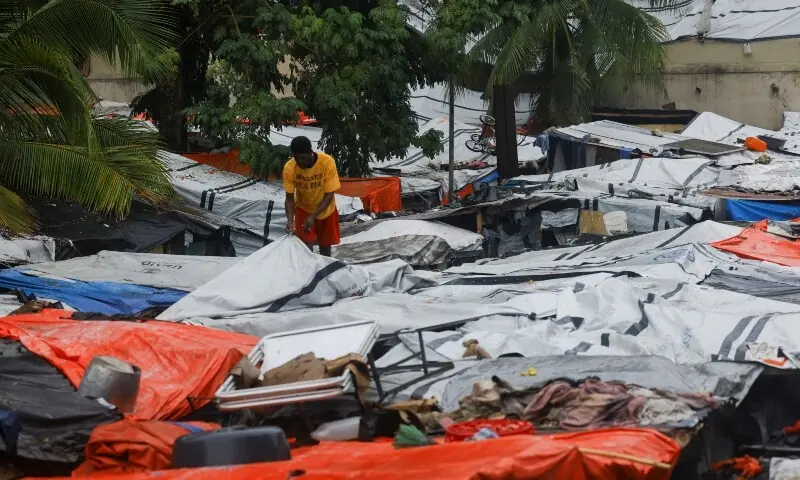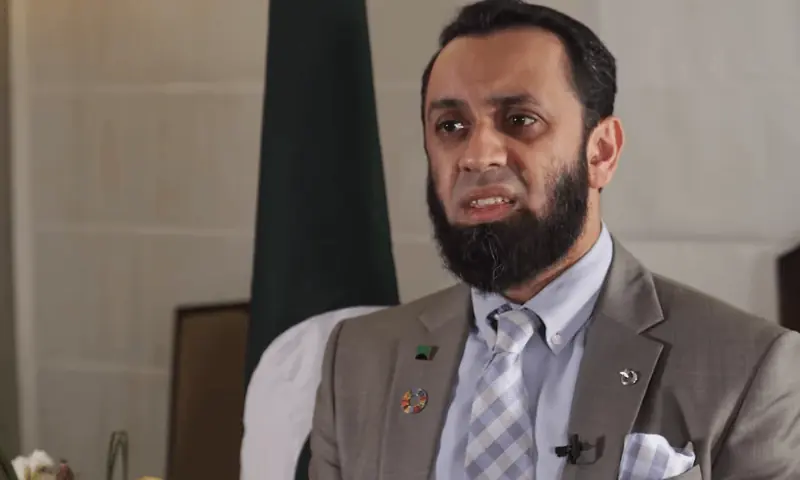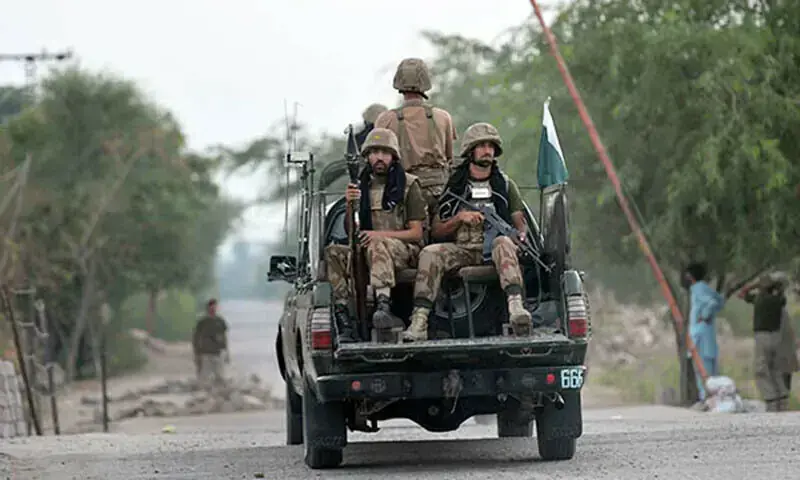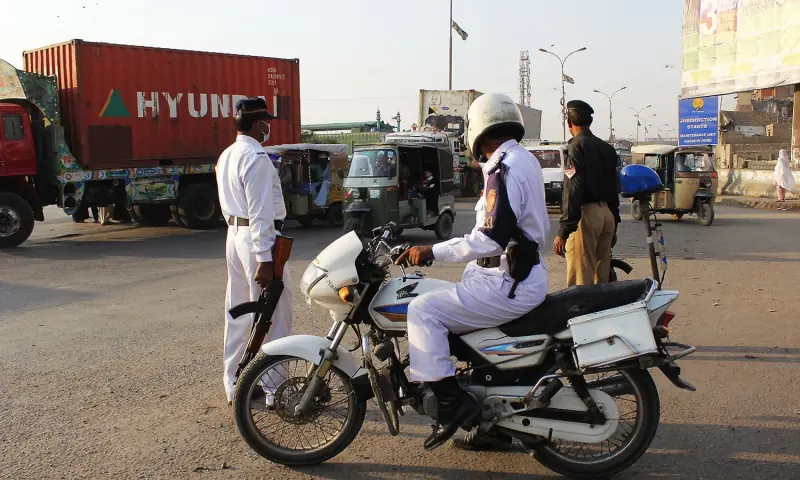Hurricane Melissa unleashed devastation on Jamaica as the strongest storm ever recorded to hit the Caribbean island nation, and later on Wednesday it slammed into eastern Cuba, destroying the city of Santiago and flooding rural lands.
Melissa, a Category 5 storm with sustained winds of 185 miles per hour when it hit Jamaica, had been downgraded to a still dangerous Category 3 when it hit Cuba with sustained winds of 120 mph, the US National Hurricane Center (NHC) said.
“Life-threatening storm surge, flash flooding, landslides, and damaging hurricane force winds are occurring this morning,” the center said.
The historic storm hit western Jamaica, demolishing homes, toppling trees and washing away roads. Authorities have not yet released details of the deaths but said they expected loss of life.
Eyewitness reports and videos on social media in Jamaica showed vehicles destroyed by flying debris, hotel doors ripped off their hinges and roofs scattered across neighborhoods. Video from Montego Bay airport showed flooded seating areas, broken glass and collapsed ceilings.
The storm was expected to weaken slightly as it crossed Cuba, but would remain a dangerous hurricane upon reaching the Bahamas.
In eastern Cuba, about 735,000 people were evacuated from their homes as the storm approached, officials said. By mid-morning, President Miguel Díaz-Canel said Cuba had already suffered extensive damage and warned residents not to let their guard down, urging them to remain protected.
‘Some loss of life is expected,’ says Jamaican leader
In southwestern Jamaica, St. Elizabeth Parish was left “underwater,” an official said, with more than 500,000 residents without power.
“The reports we have received so far would include damage to hospitals, significant damage to residential, residential and commercial properties, and damage to our road infrastructure,” Jamaican Prime Minister Andrew Holness said in cnn after the storm passed.
The government had not yet received word of confirmed deaths from the storm, but given the strength of the hurricane and the extent of the damage, “we expect there to be some loss of life,” Holness said.
“It was crazy. Like a freight train trying to stop for eight hours,” said Journie Ealey, 34, an American tourist vacationing in Jamaica, reached by phone.
“I’ve never experienced anything like this before.”
AccuWeather meteorologists said Melissa was the third most intense hurricane observed in the Caribbean, after Wilma in 2005 and Gilbert in 1988, the last major storm to make landfall in Jamaica.
Scientists say hurricanes are intensifying faster and more frequently as a result of warming ocean waters caused by greenhouse gas emissions. Many Caribbean leaders have called on rich, heavily polluting nations to provide reparations in the form of aid or debt relief to tropical island countries.
Melissa’s winds eased as the storm passed over the mountains of Jamaica, pummeling highland communities vulnerable to landslides and flooding.
“Our country has been devastated by Hurricane Melissa, but we will rebuild it and make it even better than before,” Prime Minister Holness said today.
US President Donald Trump said today that he was prepared to help Jamaica’s recovery. The State Department said it would send search and rescue teams.
In the Bahamas, next in line after Cuba on Melissa’s path to the northeast, the government ordered evacuations of residents in the southern parts of that archipelago.
Further east, the island shared by Haiti and the Dominican Republic had faced days of torrential rains that led to at least four deaths, officials said.
Cuba hit
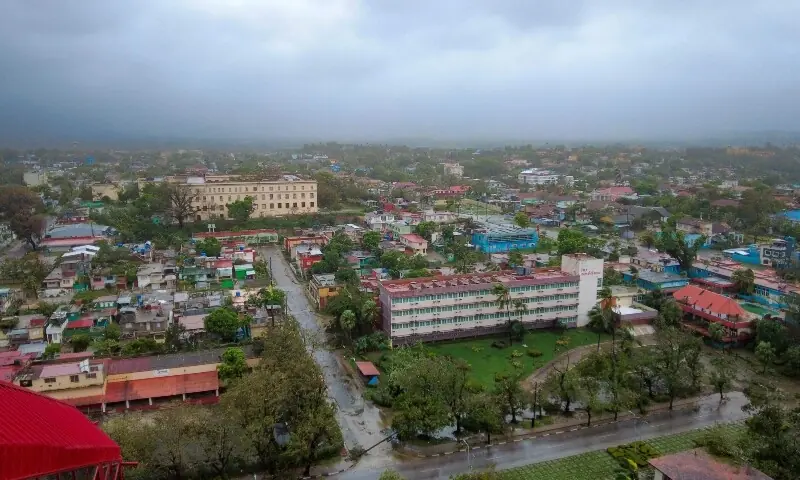
The center of the storm, agitated with violent wind gusts of more than 125 mph and heavy rain, hit Guama early today, a rural and mountainous area 40 kilometers west of Santiago de Cuba, the second most populated city on the island.
The storm was moving northeast along eastern Cuba. Authorities cut power to virtually all of eastern Cuba, evacuated vulnerable areas and asked residents to take shelter in the provincial capital, Santiago, a city of 400,000.
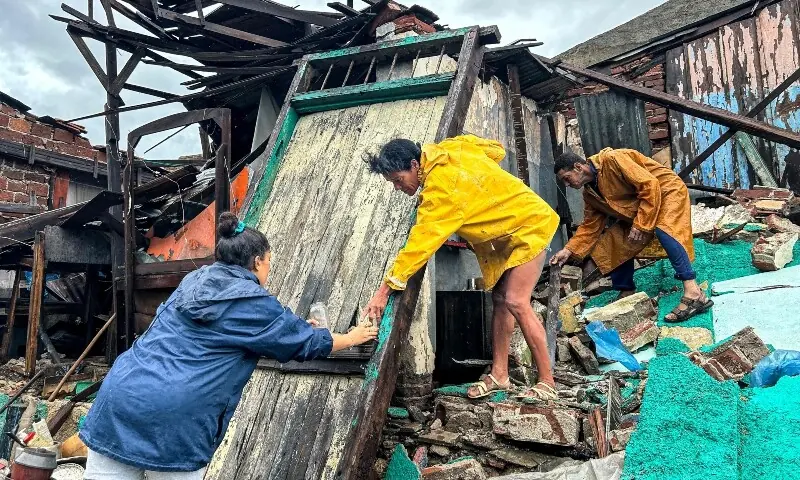
Photos and videos published today in local media and eyewitness accounts in the city revealed a chaotic scene, with downed power lines, broken windows, trees and debris strewn across the roads.
In more rural areas of the west, videos showed torrents of brown rainwater rushing down roads through dark towns at the base of Cuba’s Sierra Maestra mountains. As the storm passed, winds were still too strong mid-morning for residents to venture out onto the streets.
Authorities today reported widespread flooding in low-lying areas, from Santiago to Guantánamo, where more than 35 percent of the population had been evacuated.
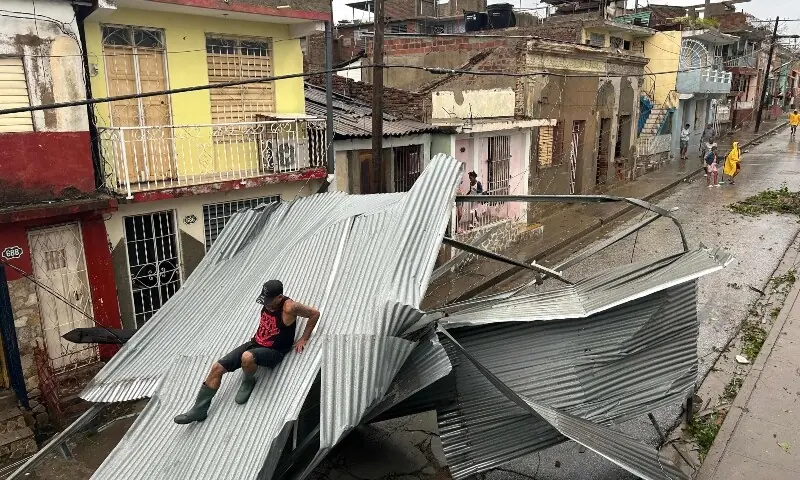
The timing could not be worse for the communist-ruled Caribbean island, which is already suffering from shortages of food, fuel, electricity and medicine that have complicated life, causing unprecedented emigration since 2021.
President Díaz-Canel said Cuba had mobilized 2,500 power line workers who would begin recovery immediately after the storm passed through the island later today.
The hurricane was not expected to directly affect the capital, Havana.




